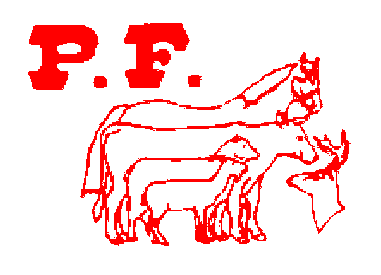



Call us: (979) 885-2903
The measurement of nitrogen in the ruminant manure has been a research tool for many years. This can be used to simplify measuring nutritional performance. The lower the percentage of nitrogen in the feces, the poorer the performance. All agricultural labs that can run a protein analysis can perform this test. “Kjeldahl” is the name of the procedure, and is the same method used for finding the protein content of alfalfa hay. For our use, only forage diets qualify for accurate and significant analysis of nutritional status by this method.
Both the rate of bacterial growth and the amount of bacterial growth in the rumen predict the amount of volatile fatty acids produced– the main source of energy supplied to the animal from forage digestion. As these microorganisms pass out of the rumen into the lower tract, they are digested and are the main source of protein from forage digestion.
Rumen organisms contain significant quantities of lipids, carbohydrates and minerals that are entirely available to the animal. This represents an important transfer of food energy from the rumen.
The bacterial dry matter contains 55% protein; of this 85% is digestible. This leaves 15% of the crude protein from this source as a variable passed out with the feces. This fraction reflects rate of fermentation that took place in the rumen and accurately predicts quantities of energy and protein made available to the animal. Fecal Nitrogen reflects performance on a forage ration only. Concentrate feeding can cause lower tract fermentation that will make this analysis inaccurate for measuring the animals performance.
| The following percentages of fecal nitrogen can be looked at as objectives on cows: | ||
| 1) Maintenance level | 1.50% | |
| 2) Calving for Cow | 1.90 – 2.00% | |
| 3) Optimum | 2.80 – 3.50% | |
| Fecal Nitrogen on Yearlings | |||
| Percentage of the total nutrients digested, as measured by fecal nitrogen, required for maintenance of the animal unit: | |||
|
Pounds of Gain
|
Fecal “N”
|
Maintenance
|
Maintenance As A % of Digestible Energy
|
| 0.0 | 1.50 | 1.5 | 100% = parity or par |
| 1.0 | 1.75 | > | 86% only 14% productive |
| 1.5 | 2.05 | > | 73% (=27%) |
| 2.0 | 2.80 | > | 54% (=46%) |
| 3.0 | 3.25 | > | 46% (=54%) |
| Walt Hunsaker conducted a field trial near Ducor, CA. The cows were on a 3% crude protein (dry feed) with a 53% acid detergent fiber (low digestibility). Three pounds of wheat midds were hand-fed daily, along with the molasses supplement, due to very low crude protein. Mr. Hunsaker said he could do without the wheat midds on his older cows but may be necessary on heifers. | ||
| Type of Supplement | Intake/Day | Fecal Nitrogen |
| Cow/Calf 28% | 1.2 lbs/day | 1.60% |
| ALL-IN-ONE 30% | 0.6 lbs/day | 1.65% |
| Ferris Brough conducted a field trial near Wells, NV. The cows were placed on stubble fields and hay, were sorted to flesh prior to the start. Cows with good flesh received no supplement and the medium flesh cows received our new ALL-IN-ONE supplement. Mr. Brough said the control cows lost weight and body condition and had to be supplemented later in the season, but the thinnest cows visually improved in flesh and condition. | ||
| Type of Supplement | Intake/Day | Fecal Nitrogen |
| Controls – none | n/a | 1.30% |
| ALL-IN-ONE 30% | 0.35 lbs/day | 1.67% |